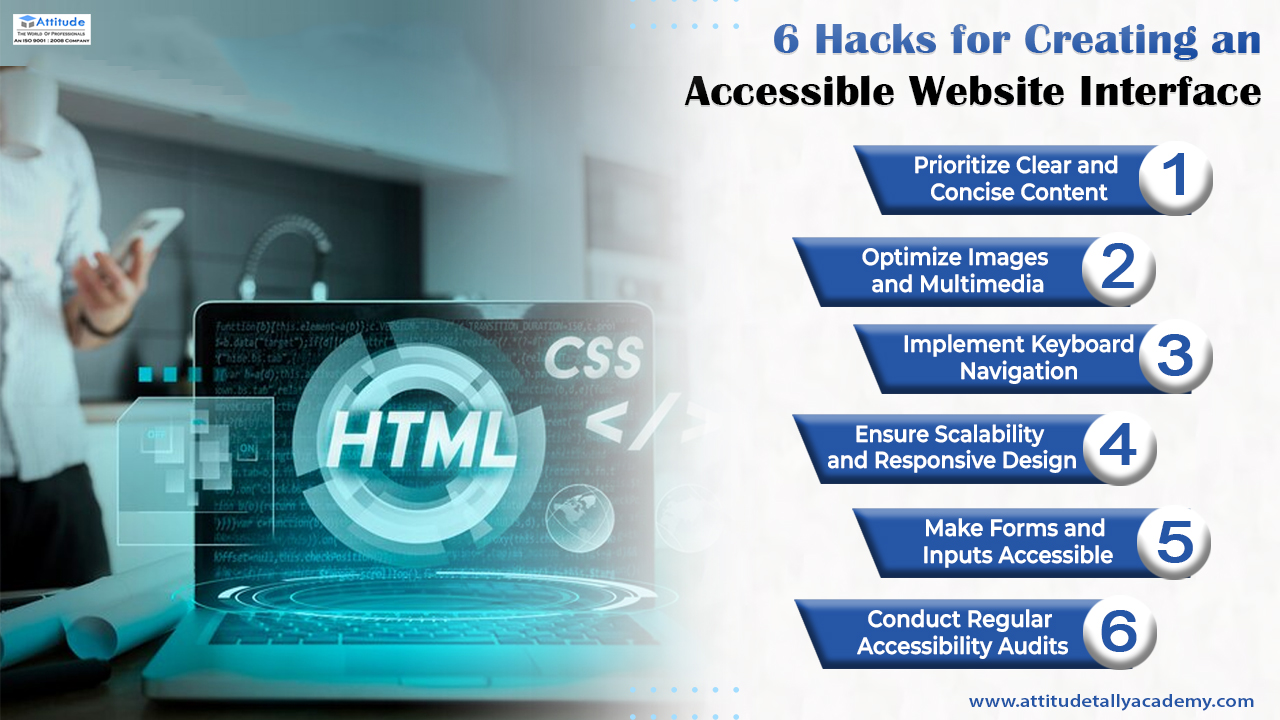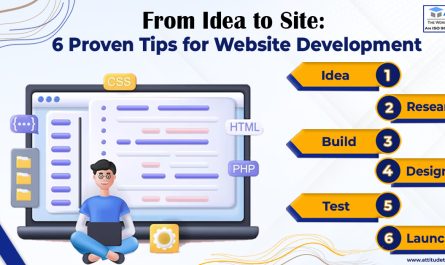Introduction
Creating an accessible website interface is crucial for reaching a broader audience and providing a seamless user experience for everyone. Whether you are a web designer, developer, or business owner, understanding and implementing website accessibility hacks is essential. Here are six practical hacks to optimize your website interface for accessibility:
- Prioritize Clear and Concise Content
One of the most important aspects of website accessibility is content clarity. Clear and concise content helps users understand your message quickly and easily. Avoid jargon and complex sentences, and break your text into short paragraphs with descriptive headings. This approach enhances readability and makes your website more user-friendly for everyone, including those with cognitive disabilities.
- Optimize Images and Multimedia
Images and multimedia elements can greatly enhance your website’s appeal, but they must be optimized for accessibility. Use descriptive alt text for images so that screen readers can convey the information to visually impaired users. For videos, provide captions and transcripts to ensure that hearing-impaired users can access the content. Optimizing images and multimedia not only improves accessibility but also boosts your SEO.
- Implement Keyboard Navigation
Not all users navigate websites using a mouse; some rely on keyboards or assistive technologies. Implementing keyboard navigation is essential for creating an accessible website interface. Ensure that all interactive elements, such as links, buttons, and forms, can be accessed and used via the keyboard. This includes using logical tab orders and providing visible focus indicators to guide users as they navigate your site.
- Ensure Scalability and Responsive Design
A responsive design that adapts to different screen sizes and devices is crucial for accessibility. Ensure your website is scalable, meaning it should be easy to zoom in without losing content quality or layout integrity. A responsive design ensures that users with visual impairments, who may need to enlarge text or images, can still navigate and interact with your site effectively.
- Make Forms and Inputs Accessible
Forms are a common feature on many websites, from contact forms to checkout processes. Making these forms accessible is essential. Use clear labels and instructions for each form field, and ensure they are associated with the corresponding input fields. Provide error messages that are easy to understand and offer suggestions for correcting mistakes. Accessible forms improve the user experience for everyone, including those using screen readers or other assistive technologies.
- Conduct Regular Accessibility Audits
Regular accessibility audits are essential to maintain and improve your website’s accessibility. Use tools like WAVE, Axe, or Lighthouse to identify and fix accessibility issues. Regular audits ensure that your website complies with the latest accessibility standards and provides a seamless experience for all users. This practice is key to continuous website interface optimization.
Conclusion
These website accessibility hacks into your design and development process ensures that your site is usable by everyone, regardless of their abilities. This not only broadens your audience but also demonstrates your commitment to inclusivity. Prioritizing clear and concise content, optimizing images and multimedia, implementing keyboard navigation, ensuring scalability and responsive design, making forms and inputs accessible, and conducting regular audits are essential steps towards creating an accessible website interface. Start implementing these hacks today to enhance your website interface optimization and provide a better user experience for all.
Suggested Links: –
Website Design Using WordPress




